Mishima: A Stroll down the Genbe River
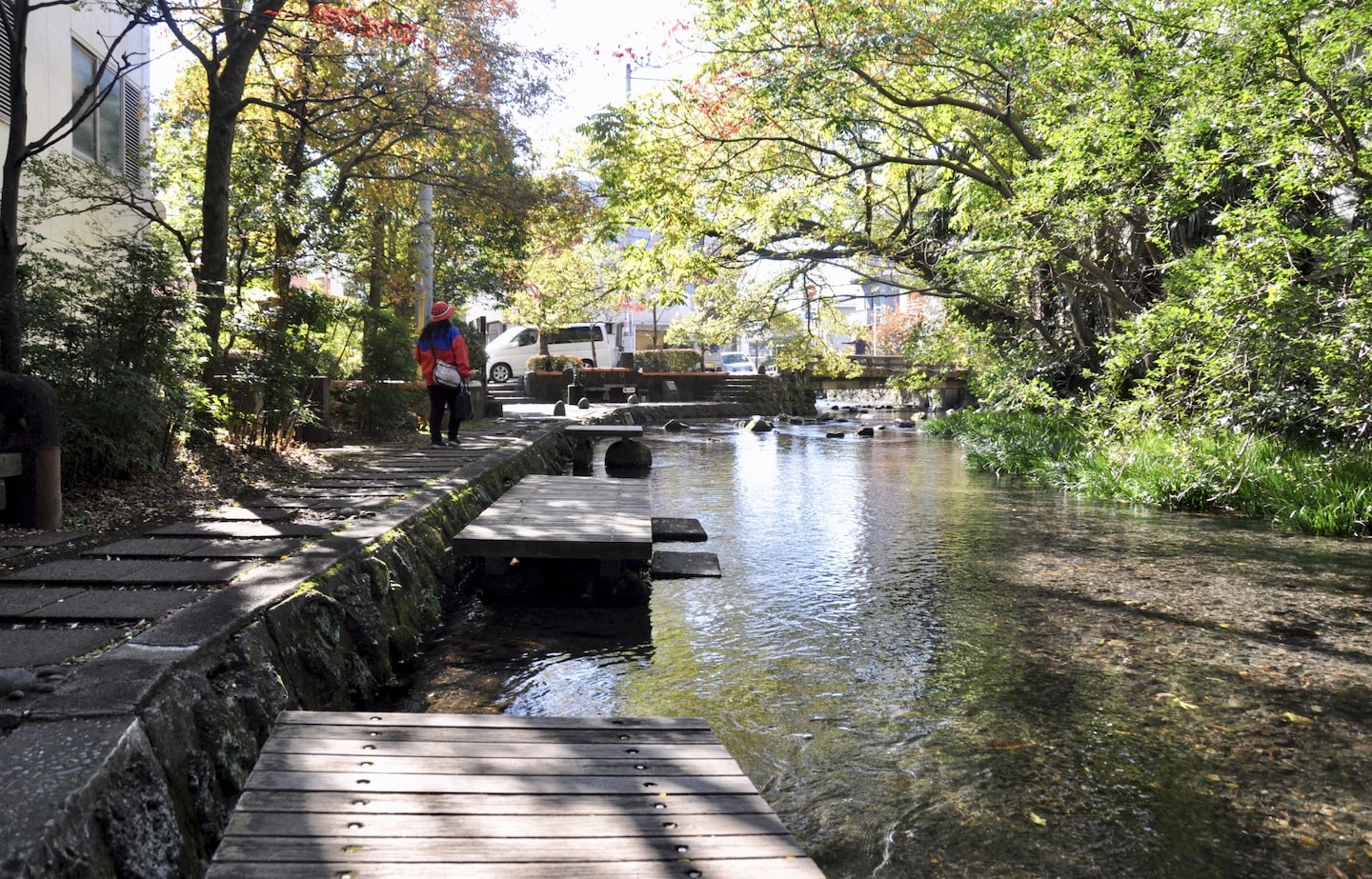
The Genbe River (源兵衛川・Genbe-gawa) flows 1.5 kilometers (0.9 mi) from its source in Rakujuen Park (楽寿園) to Nakazato Onsuichi Reservoir (中郷温水池) in Mishima City, Shizuoka. The park lies just south of Mishima Station, making it an easily accessible stroll for visitors and residents a like.
By Michael KanertGenbe River

The Genbe River is fed by water running off the slopes of Mount Fuji. However, industrial development largely beginning in the 1960s degraded this little river to the point that it was nearly built over in 1983. A collaborative effort between the public sector, private groups and volunteers managed to save it, and even now that it flows clear and fresh once more, residents still diligently work to keep it clean and maintain its biodiversity.
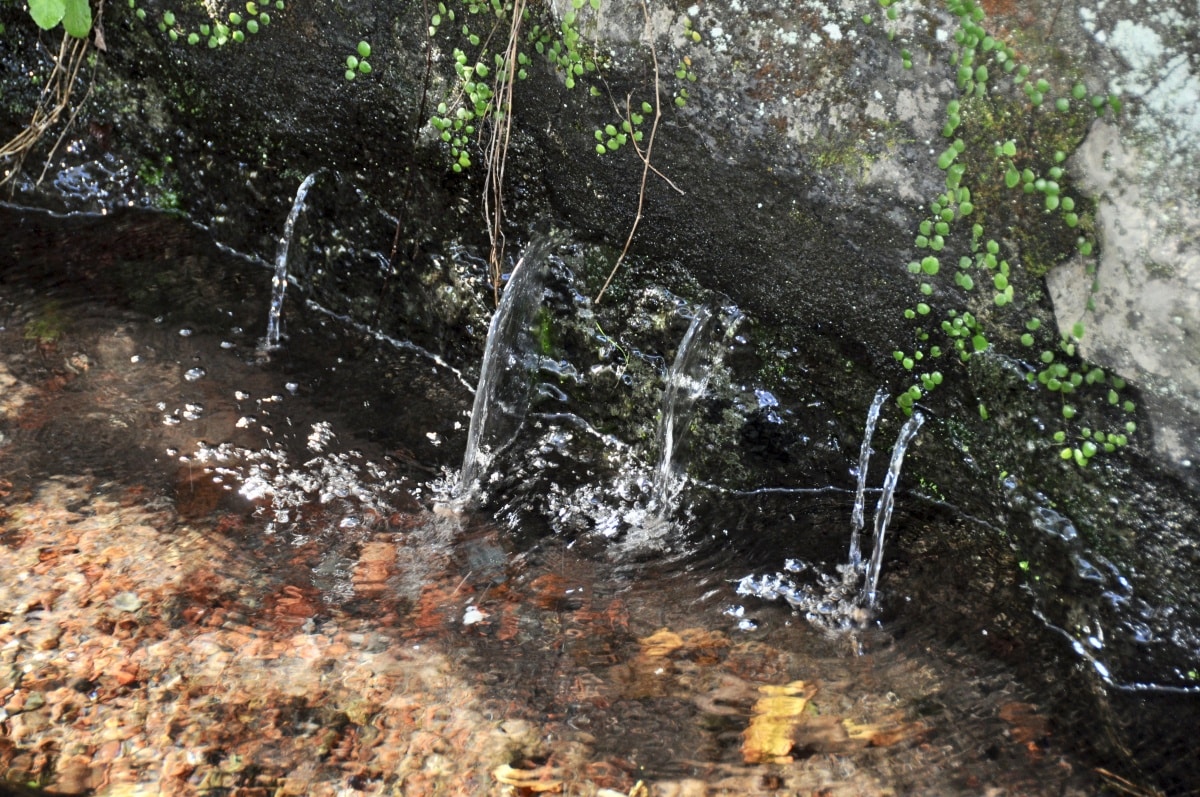
Fireflies have returned, and can now be seen in the evenings in May, making them among the earliest to appear in Japan. With stepping stones and platforms placed throughout, even in the middle of the city there's very much a pastoral feel to this riverside, where you can see groundwater flowing in from beneath the stones on which the city streets are laid. In the summer, local children play in the water, rearranging the rocks to build up deeper wells for jumping pools.
Nakazato Onsuichi Reservoir
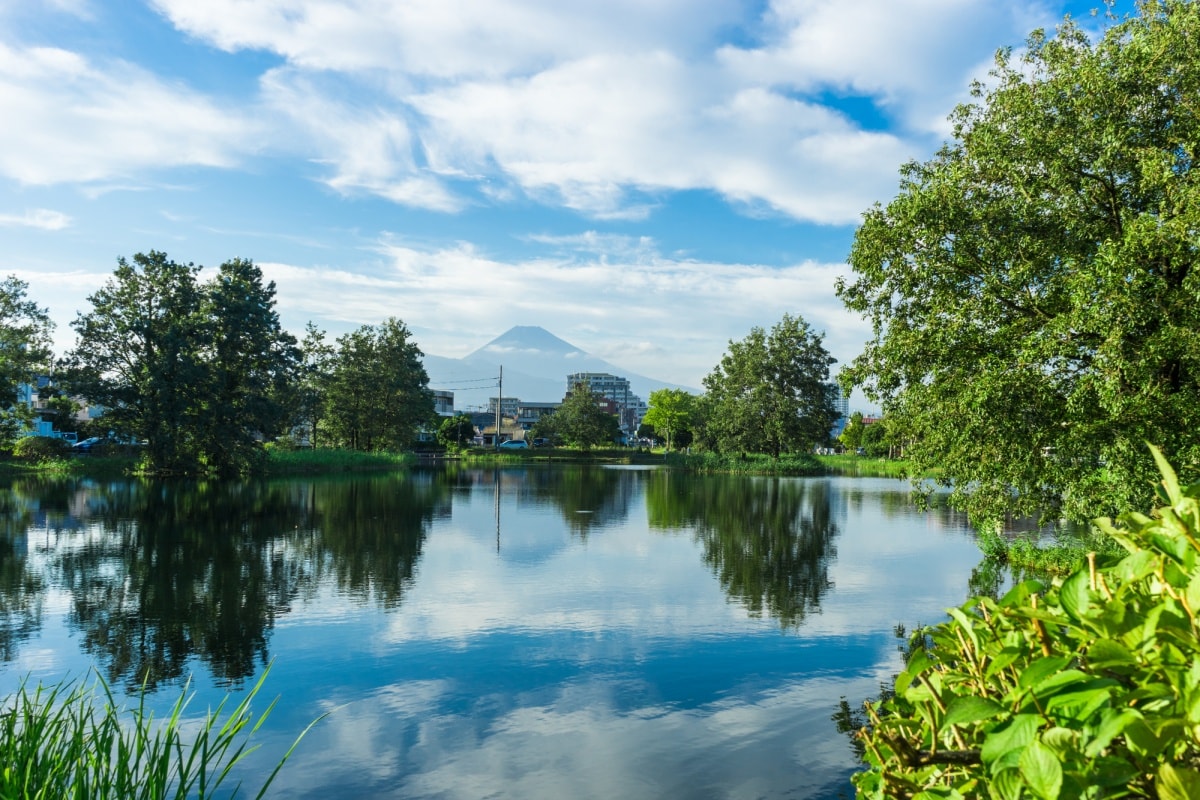
https://pixta.jp/tags/%E4%B8%AD%E9%83%B7%E6%B8%A9%E6%B0%B4%E6%B1%A0?utf8=%E2%9C%93&keyword=%E4%B8%AD%E9%83%B7%E6%B8%A9%E6%B0%B4%E6%B1%A0&search_type=0
You can follow the Genbe River all the way to the Nakazato Onsuichi Reservoir, which has a lovely view of Mount Fuji...
Taisha-no-Mori

...or turn off at the Tokaido Road to head toward Mishima-Taisha Shrine, and grab a bite among the shops at Taisha-no-Mori across the street. You can also get some wasabi soft-serve ice cream at Yamamoto Shokunin next door!
Rakujuen Park
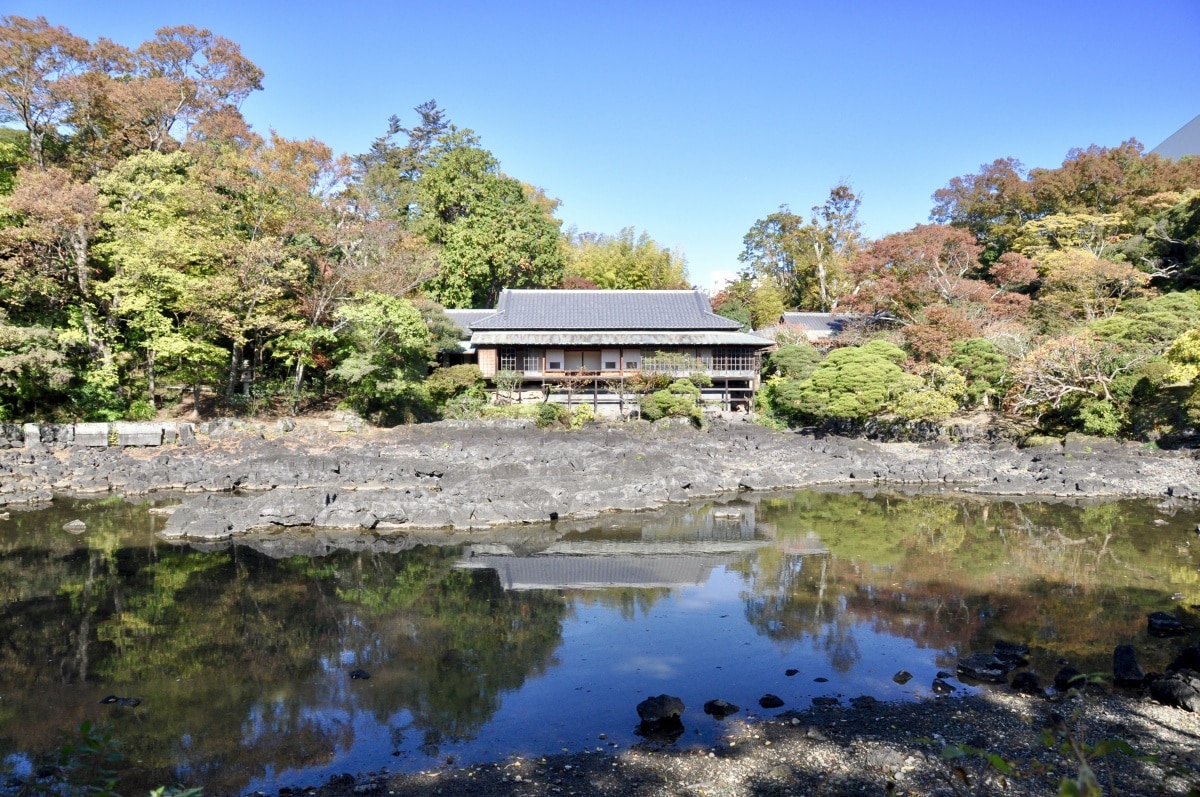
The head of the river lies in Rakujuen Park (entry ¥300), which was built on 10,000-year-old lava flows from Mount Fuji. Black volcanic rock visible everywhere beneath its thin layer of soil, the park was originally the garden of the Rakujukan (楽寿館), constructed in 1890 as a second home for Prince Komatsu Akihito, an officer in the Imperial Japanese Army and a member of the Fushimi-no-miya sub-branch of the imperial family line. Covering over 75,000 square meters (more than 18 acres), the manor was purchased by the city and opened as a park in 1954.
The Rakujukan still sits on the edge of Kohama-ike Pond (小浜池), the source of the Genbe River. While the pond once boasted the greatest groundwater inflow in the area, the flow became restricted following regional industrial development in the 1960s, and now the water level varies, typically rising in the summer and dropping to reveal dark rocks in the winter. The Rakujukan can only be entered with guided tours, which are available six times daily from 9:30 a.m. to 3:30 p.m.
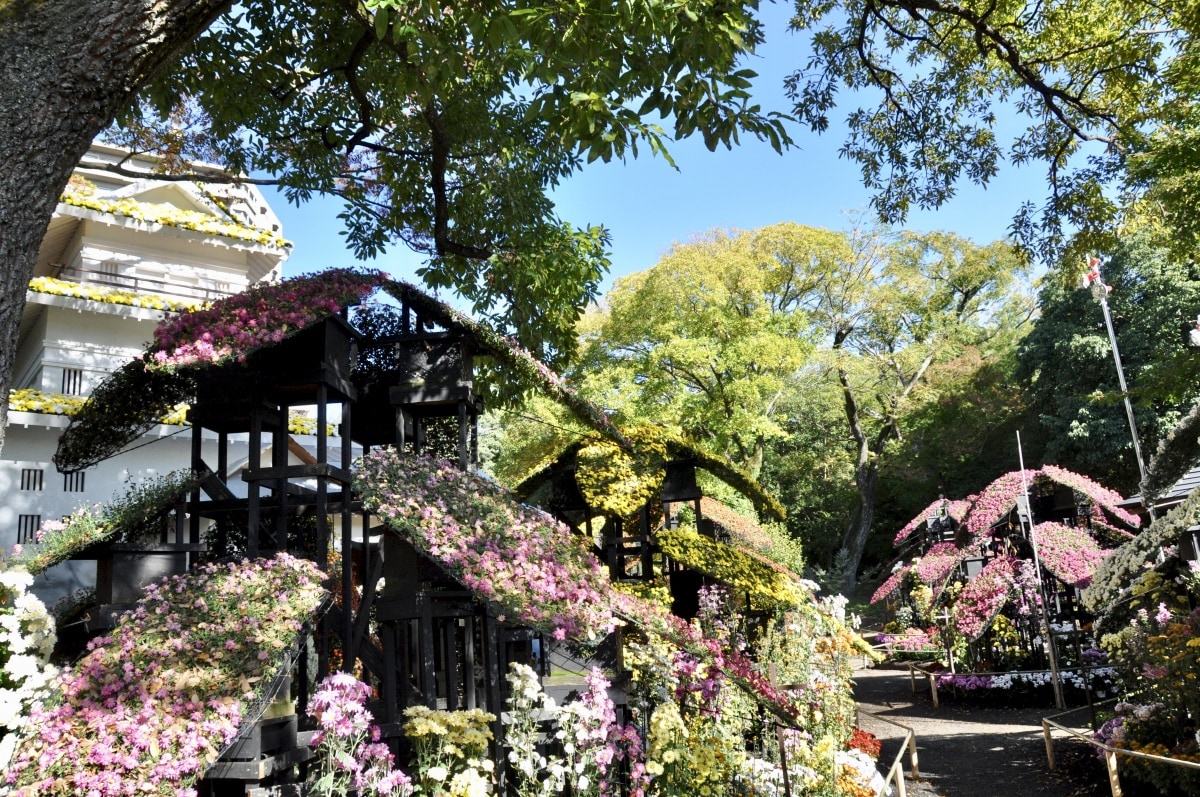
If you're looking for a good time to visit the park, the Rakujuen Chrysanthemum Festival (楽寿園 菊まつり・Rakujuen Kiku Matsuri) is held from October 30 to November 30, each year featuring a large reconstruction of a famous castle as well as nighttime illumination.
Once a gathering place for Japanese novelists, Mishima is once again a city of water, with roughly 1.5 million tons of it welling up from the ground every day. It's nice to take a stroll down one of its waterways and simply reflect on where the city has been, and where it's going.



